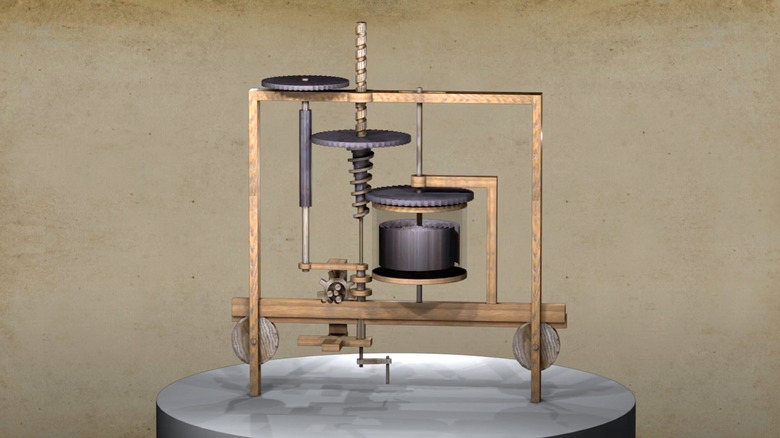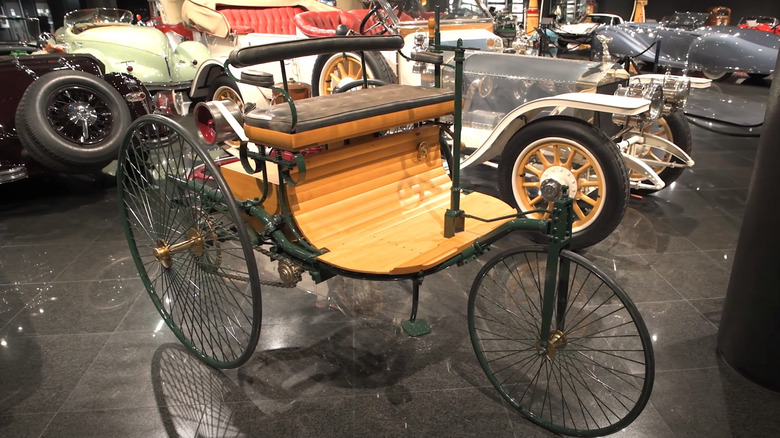Did Leonardo Da Vinci Really Invent The CVT Transmission?
Even if you're not well-versed in modern human history, the name Leonardo da Vinci likely still conjures some pretty specific imagery. While the Mona Lisa, The Last Supper, The Vitruvian Man, and perhaps even a certain Hollywood blockbuster are no doubt among the first things that spring to mind, we'd lay even odds that few of you might be inclined to think about automobile transmissions when you think about Da Vinci.
Apart from his iconic contributions to the world of art, Da Vinci was, of course, also a renowned inventor, with the likes of the bicycle, the parachute, the helicopter, and winged flying machines ranking among his biggest 15th and 16th Century conjurings, among many other fascinating apparatuses. And that's not even accounting for the man's contributions to the worlds of math, sculpting, and architecture. Yes, Da Vinci — who may or may not have had ADHD — even imagined a device that could be considered an early version of the continuously variable transmission.
It's perhaps better known by the acronym CVT, which is a version of an automatic transmission that utilizes either a pulley or belt instead of gears to power the wheels of an automobile and keep it in motion. To be clear, we are not trying to convince you that Leonardo da Vinci invented the CVT, as even a man of his genius couldn't have fully foreseen the advent of the modern automobile. But one could argue that the CVT might not exist without him.
Da Vinci's design was well ahead of its time
The invention that may have aided in the development of the CVT that we know today was sketched by Leonardo da Vinci for the first time as early as the late-15th Century. As hard as it may be to believe that Da Vinci first conceived the device more than five centuries ago, the sketch was reportedly found in one of his notebooks dating to 1490. Yes, that sketch did indeed display a design boasting a stepless set of gears that transferred power to an output shaft that could, in theory, initiate movement in an automobile — if automobiles had actually existed in Da Vinci's lifetime.
Da Vinci presumably had other uses in mind for his CVT concept, perhaps instead eyeing the device for use in an industrial environment. And it should go without saying that the CVT as he'd envisioned it likely would not have been capable of functioning within a vehicle powered by an internal combustion engine.
In any case, the technology that was needed for Da Vinci to bring his design to life may not have existed when he sketched it out, as it appears he never even tried to assemble a working prototype of his continuously variable transmission. Nonetheless, Da Vinci's CVT remains a fascinating harbinger for the sort of transmissions that would eventually power automobiles of all shapes and sizes.
The first automotive CVTs
Several centuries would pass before automakers would utilize the continuously variable transmissions in an actual automobile, but once the first cars were made, it didn't take much longer. It just so happens that when one of the very first automobiles hit the streets, it did so with a CVT in tow.
That vehicle was the Patent Motorwagen, which was the brainchild of the man behind one of the most prominent names in the world of modern automobiles, Carl Benz. The automaker is, of course, the co-founder of the automobile brand that would eventually become Mercedes-Benz, though his Patent Motorwagen is not considered to be the first Mercedes. It is, however, considered the first gas-powered automobile in existence, with Benz filing his patents for the vehicle in 1886.
In reality, The Motorwagen was more carriage than car, boasting an open frame and a three-wheel design. And just for the record, there's no historical proof that Benz utilized Leonardo da Vinci's designs for the belt-driven CVT he used in the vehicle's making. Moreover, the CVT did not become a mainstay in the automotive realm in the 19th Century, with manual transmissions, and later automatic models becoming the standard. The CVT did make a bit of a comeback in the 1980s, however, and these days is still utilized in popular models from many major automobile brands, including Subaru, Honda, Toyota, Chevy, and Ford to name just a few. The transmission is even used in the SlashGear approved 2024 Hyundai Kona.


